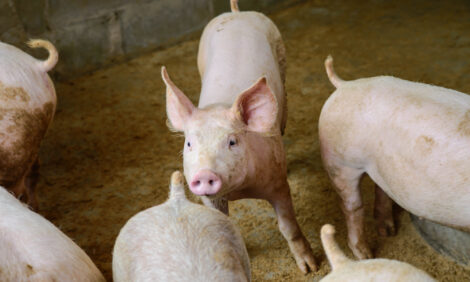



Market Preview: Pork’s Good, Bad and Ugly Scenario
US - Weekly US Market Preview provided by Steve R. Meyer, Ph.D., Paragon Economics, Inc.Corn prices are down! That’s good, right? No, that’s bad because incentives to reduce numbers are low. Oh, that’s bad. No, that’s good because it means producers aren’t losing as much money and thus might be able to hang on until pig production economics improve. Oh, that’s good. No, that’s bad.
This give and take could go on and on, continuing last week’s closing theme, but suffice it to say that last week’s grain and hog markets added a new act to our Hee-Haw tragedy play.
Sharply higher soybeans drove the grain complex higher. That strength included corn, which was apparently along for a sympathy ride since there was no real bad news about this year’s crop. Yes, temperatures are still cool and that makes the first frost date a critical factor. Some parts of the eastern Corn Belt still look rough, but crop conditions in the big corn states are very good and that likely kept corn price increases in check to some degree.
And not only did feed prices rise, but the rally in pork cutout values came to an abrupt halt as hog slaughter swelled and carcass weights remained constant. Are these hogs backed up by slower chain speeds and floating holidays in recent weeks? Or, are these hogs being pulled ahead by very good summer growing conditions? I think it is some of both and the balance may be that we are about normal on marketing pace. Still, I’m concerned that we may have plenty of hogs out there in the short run.
The bottom line is that we still need to reduce output if we are to return to profitability. Demand may increase in coming months, but it almost certainly will not grow enough to cover breakeven costs in the low- to mid-$60s/cwt., carcass weight.
So why aren’t we cutting back more aggressively? The answer is that the market has not (at least until last week) said to do so! That was the message of Iowa State agricultural economist John Lawrence delivered last week at the Livestock Outlook session of the Agricultural and Applied Economics Association (formerly the American Agricultural Economics Association).
Lawrence’s message was clear: Economic theory tells us that a firm will not cease production in the short run until it fails to cover variable costs and, for the most part, the pork industry has covered variable costs – or at least has had solid expectations that variable costs can be covered in the future. In the long run, of course, total costs must be covered but in the short run, firms will operate as long as they can cover variable costs – those that will go away if production ceases.
To support his viewpoint, Lawrence offered a series of charts showing estimated feed, total variable costs and total costs from the Iowa State University (ISU) Estimated Costs and Returns series that he and colleague Shane Ellis track. I have included four of those charts (Figures 1-4) that document hog price and production cost forecasts for 1 April, 20 May, 17 July and 29 July. Note that the only time that projected prices were significantly below variable costs was in the 29 July chart and that the losses vs. variable costs lasted only through January 2010.


Some may ask: “Why haven’t producers responded to prices being below variable costs for much of the period since September 2007?”
There are two primary reasons. First, pork producers do not know that prices will be below variable costs when they decide to produce. The theoretical condition of instantaneous adjustment is a luxury not bestowed on pork producers. Second, pork producers know this is a cyclical business. Their plan is always to weather the storm of the low price cycle in order to be standing when profits return. And that storm will often involve some months where variable costs are not covered.
They constantly look ahead to see whether futures markets and other price forecasts offer an eventual respite from the financial pain. Both of those have, for the most part, offered such assurances this year.
Before the H1N1 scare began in late April, futures prices and price forecasts said profits would return this summer. The message was – hang on! Even early last week (29 July), futures markets were saying variable costs would be covered in February and total costs would be covered for several months next summer. And, while last week’s futures price changes were painful, they still indicate profits for next summer with May through August futures near or above $70/cwt., carcass weight, and projected costs per the ISU production parameters in the mid-$60s.
The ultimate question, of course, is this: "Are we still in the ‘short run’ or have we moved into the ‘long run’?"
One can go only so long not paying fixed costs – depreciation (or principal payments), interest, taxes, repairs, insurance. The point at which producers and/or bankers finally say "no more" may be upon us. Last week’s markets moved us closer to that point and as of noon on Monday, corn is up 19-23 cents/bu., soybean meal is up $2 to $11/ton, and hogs are mixed – although October through February are all down more than $1/cwt. The decision point is getting closer.










